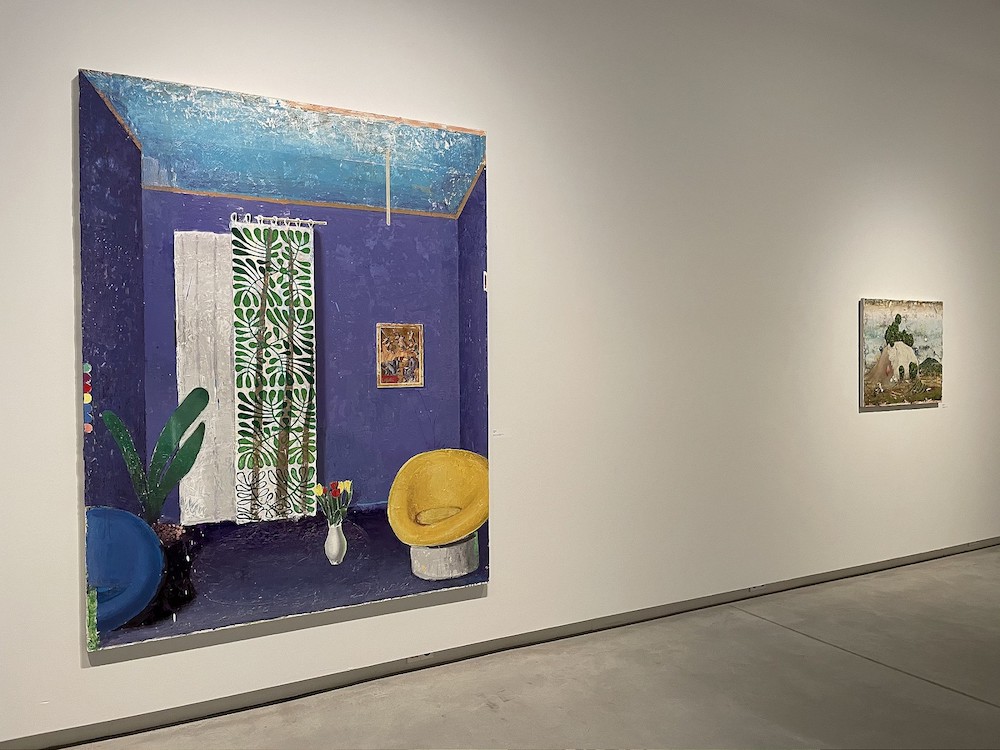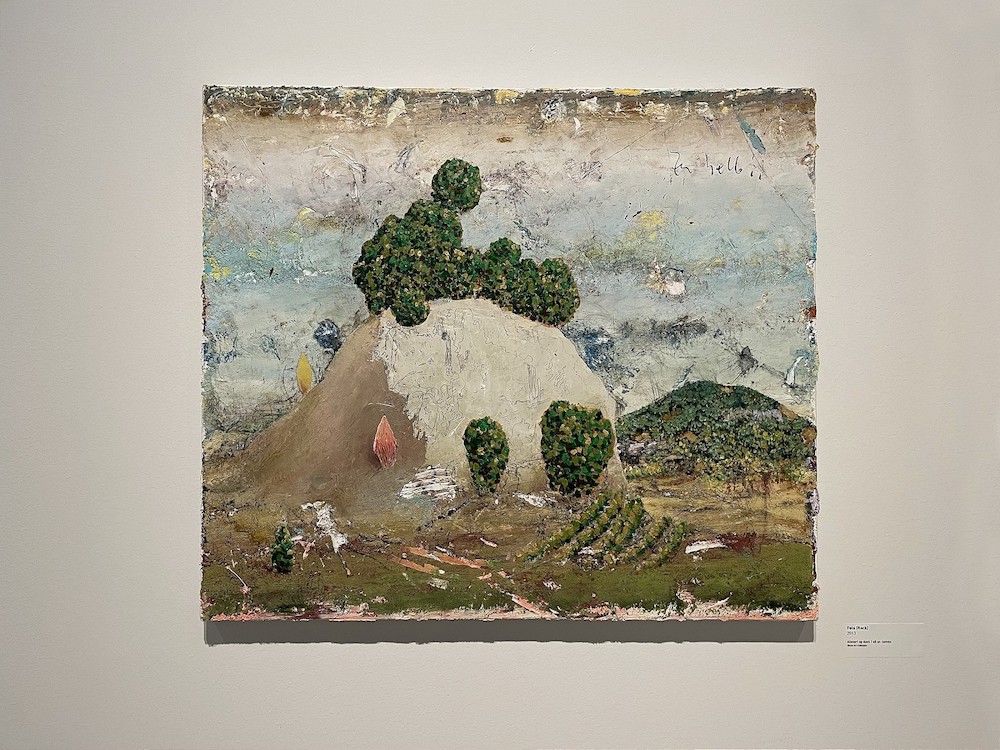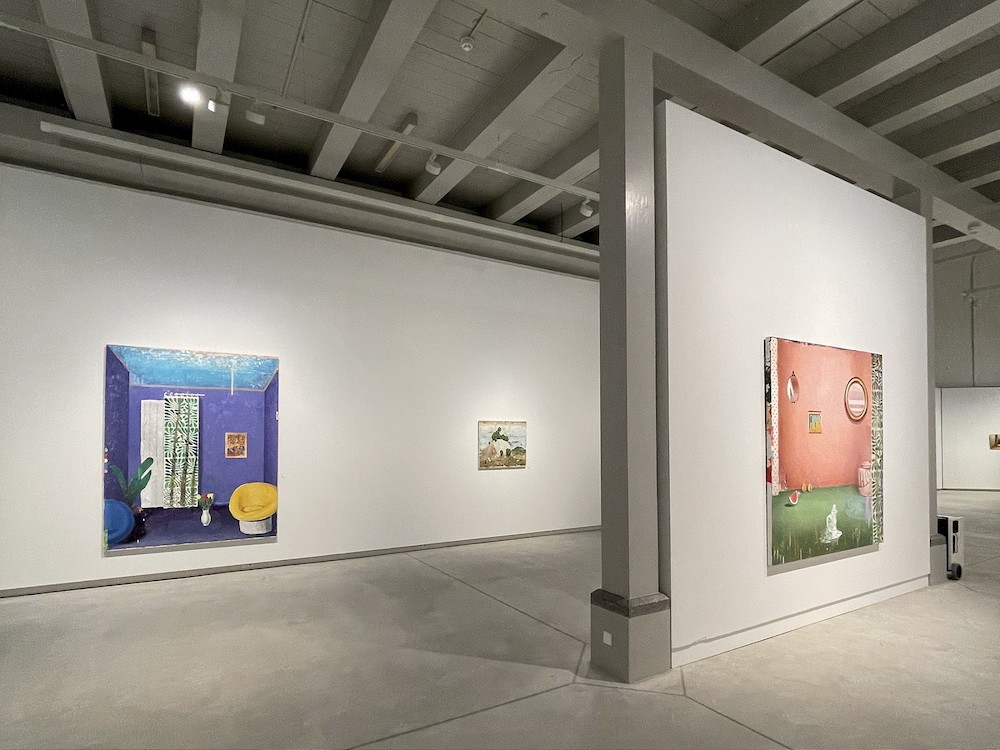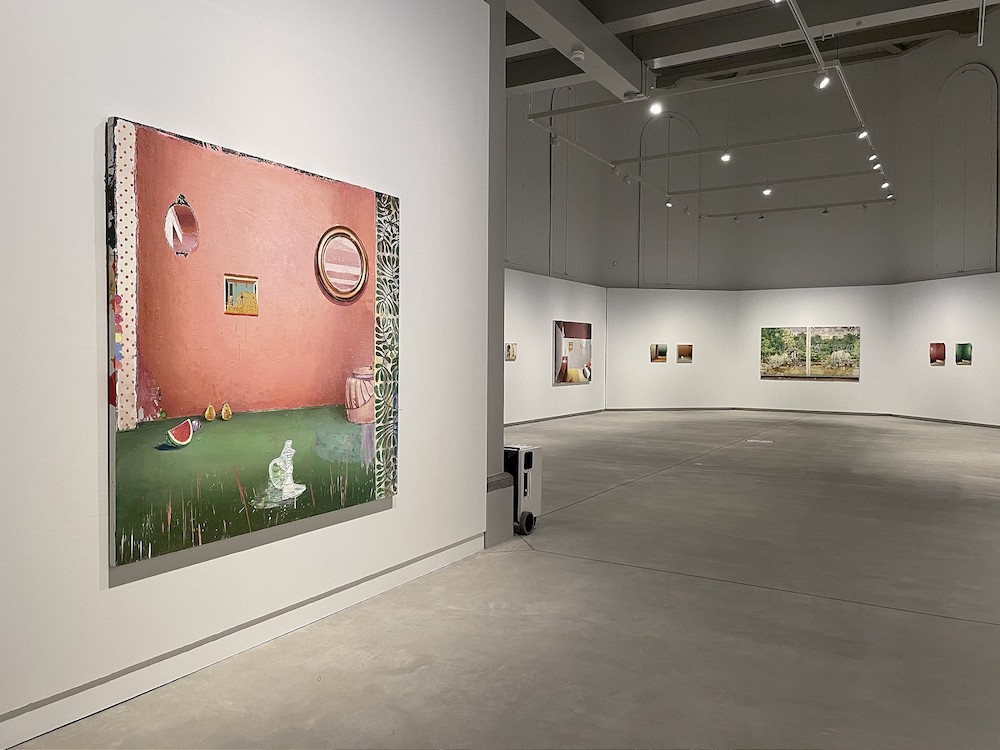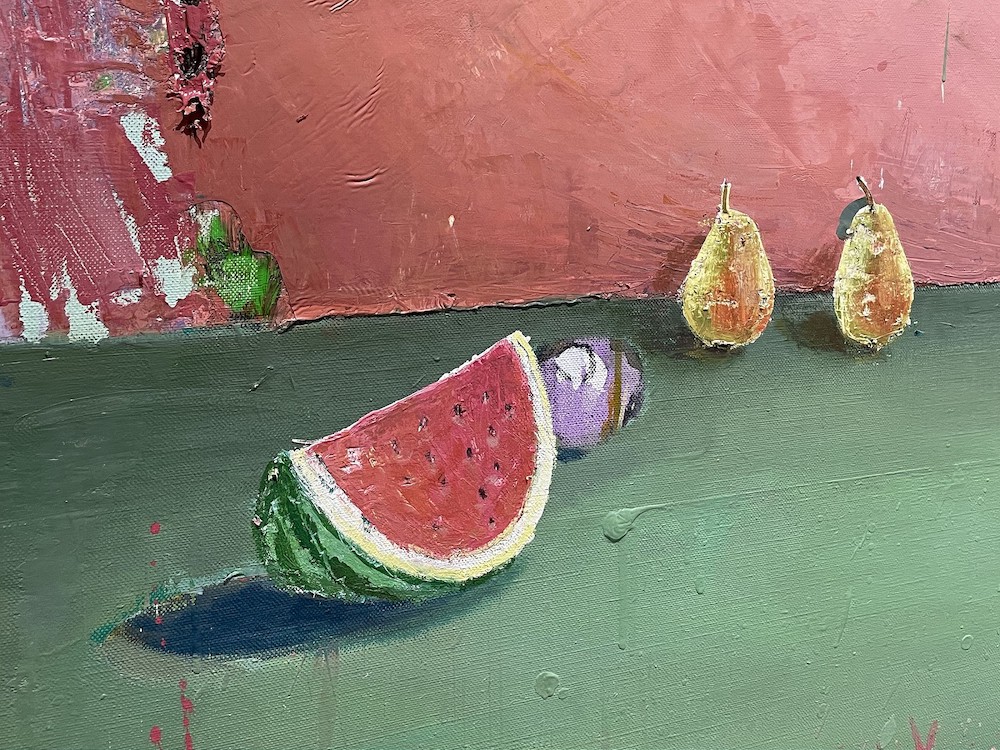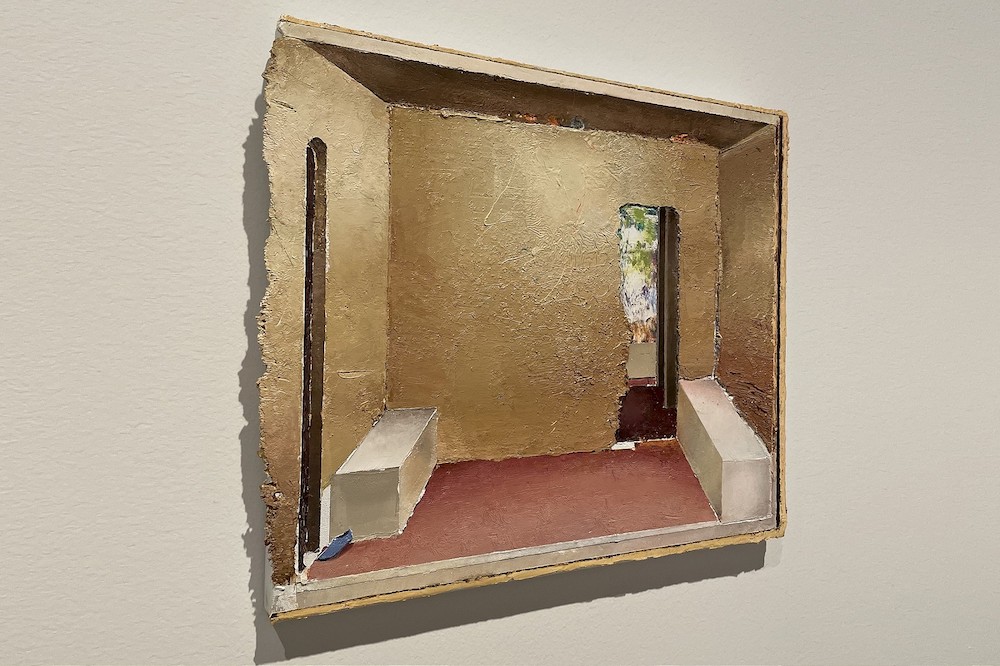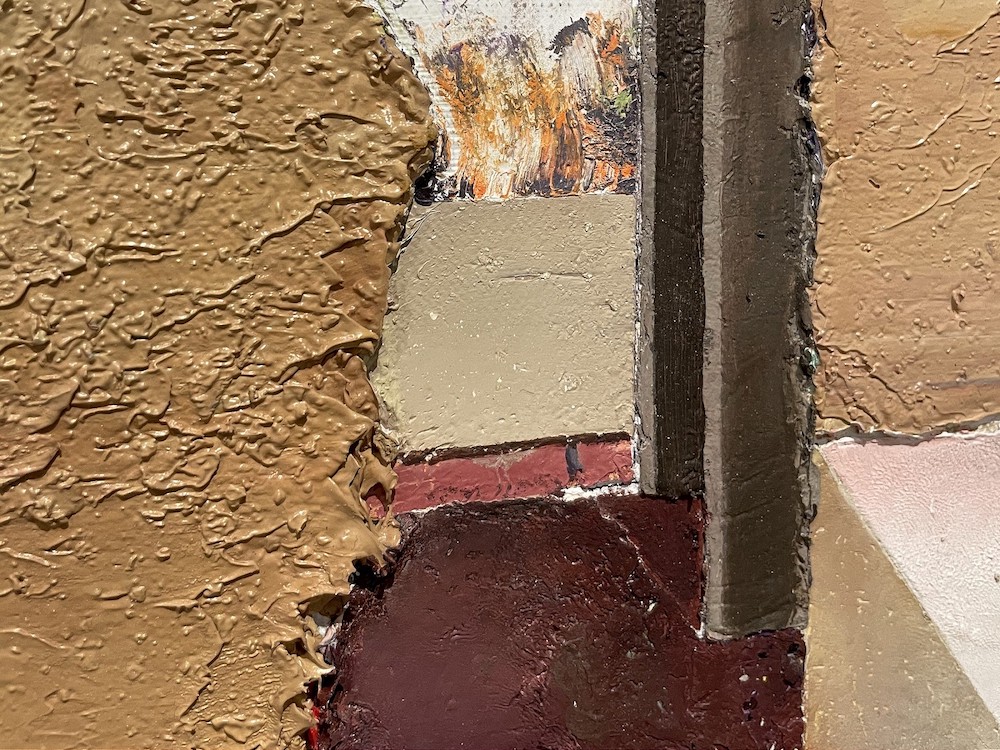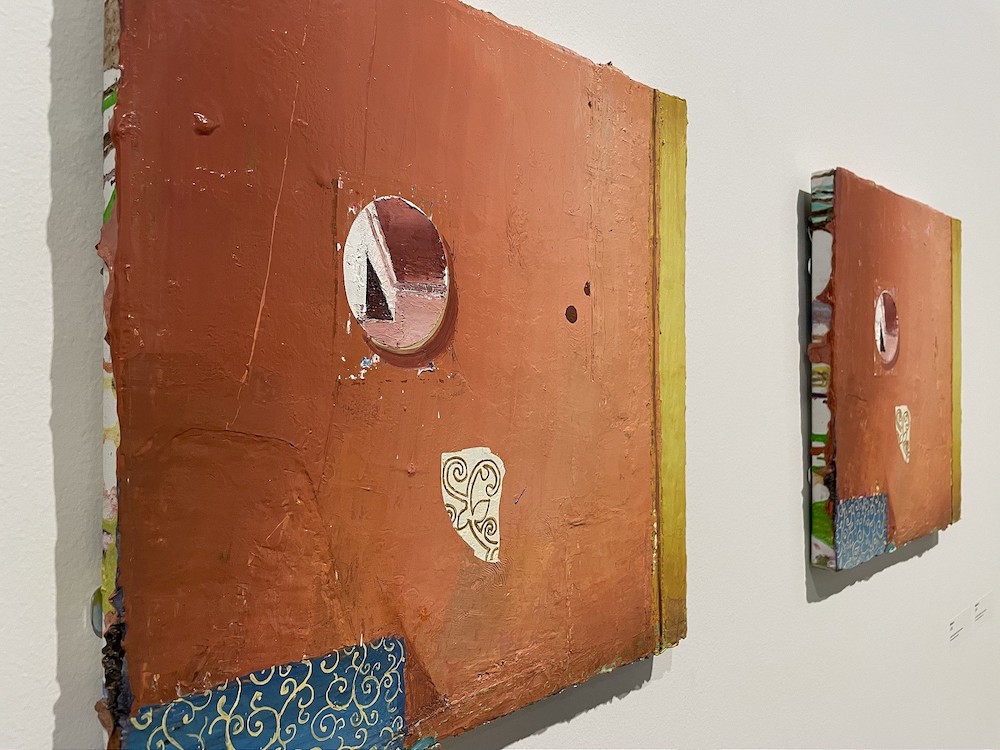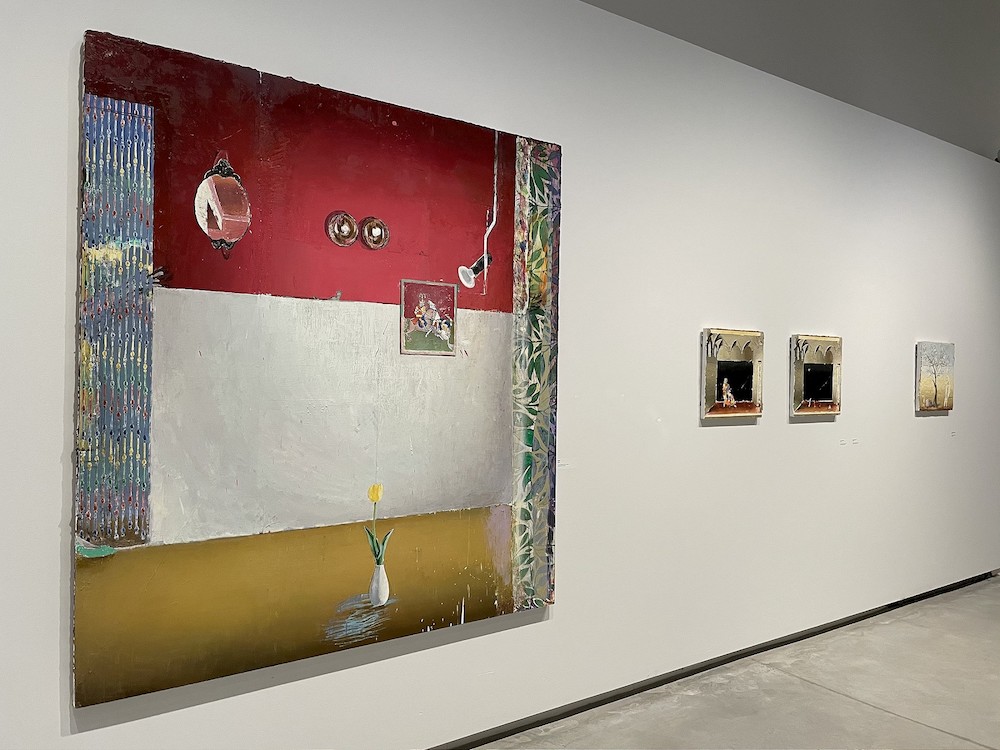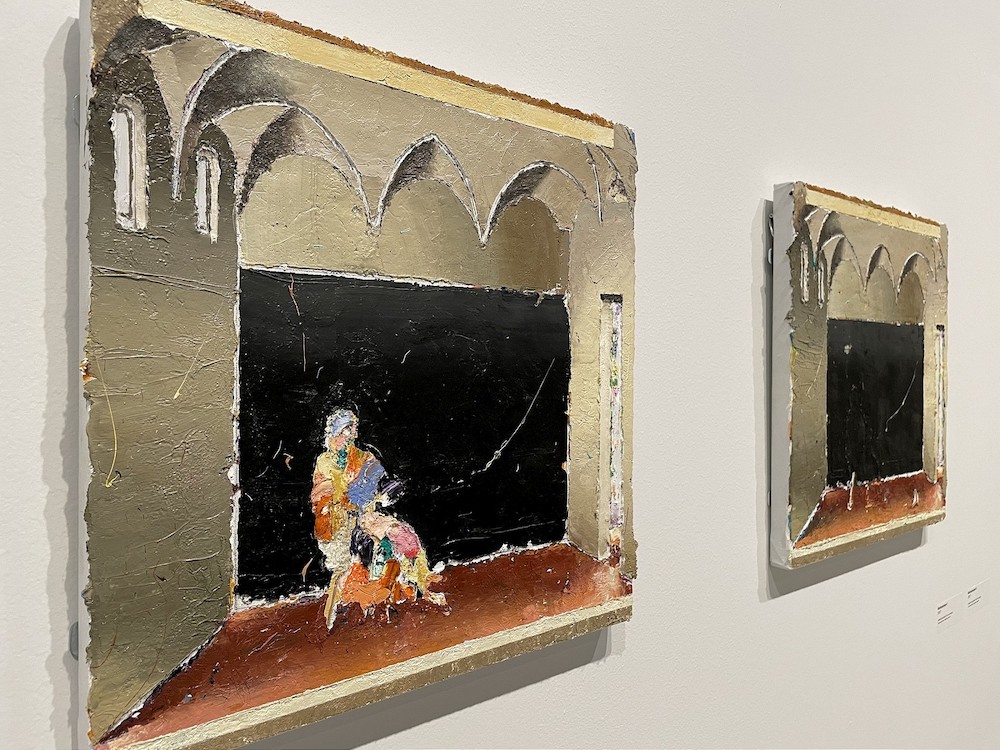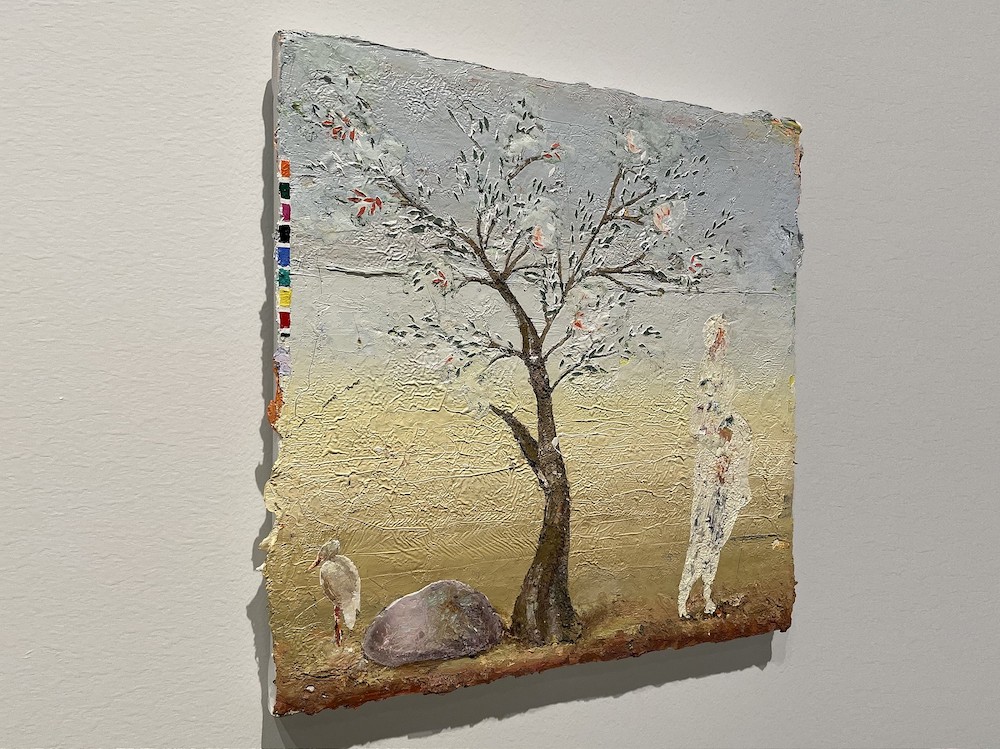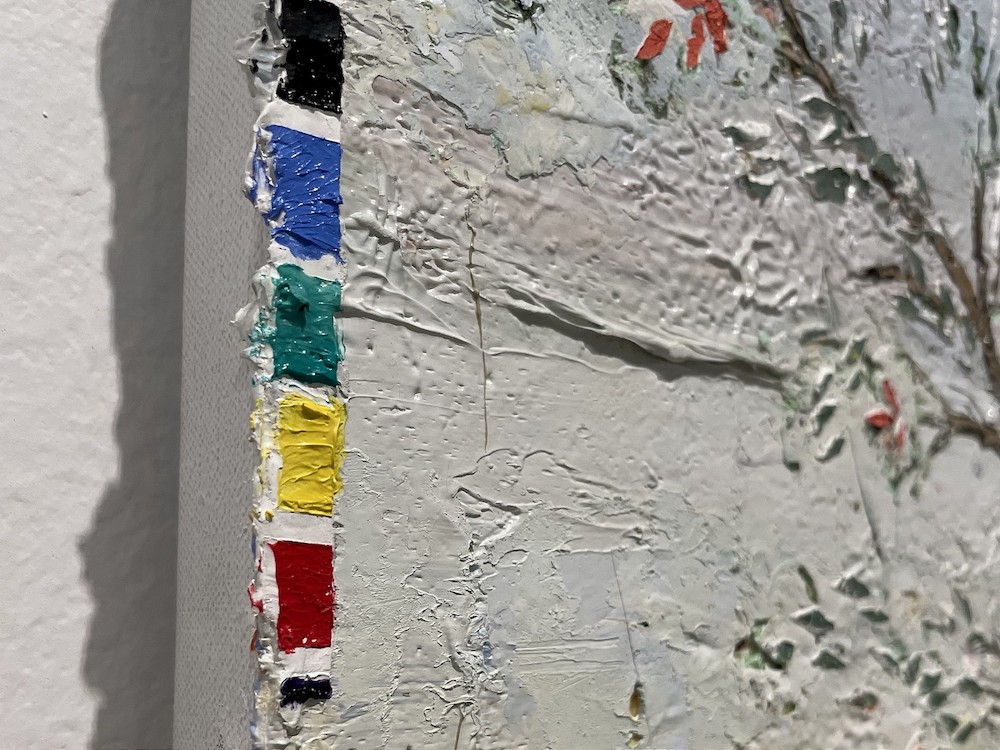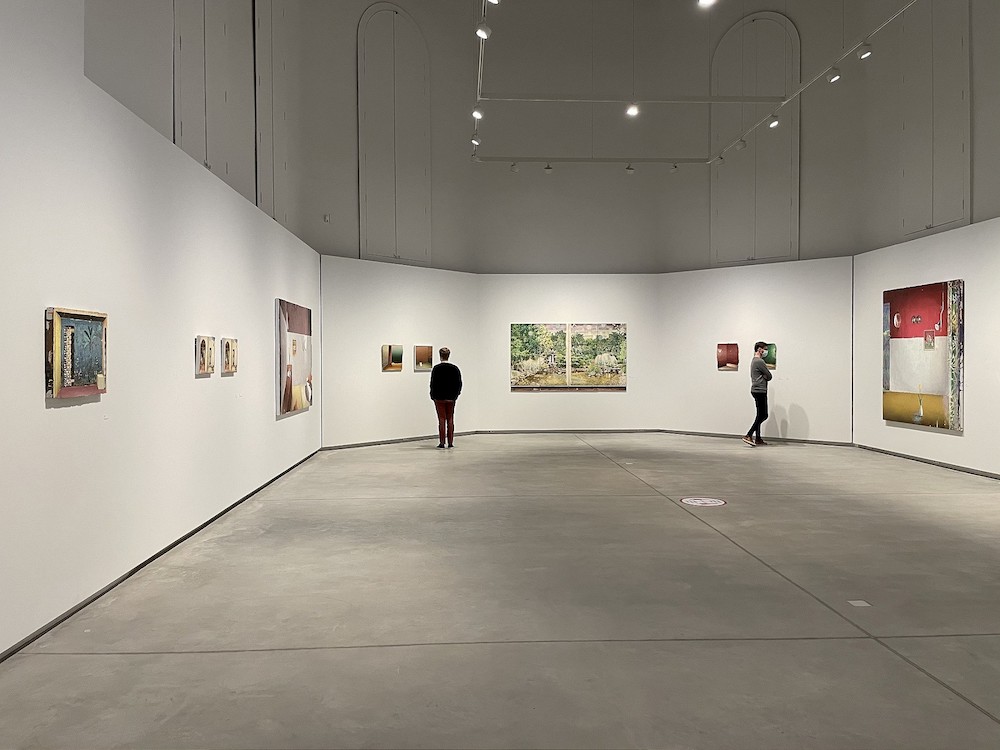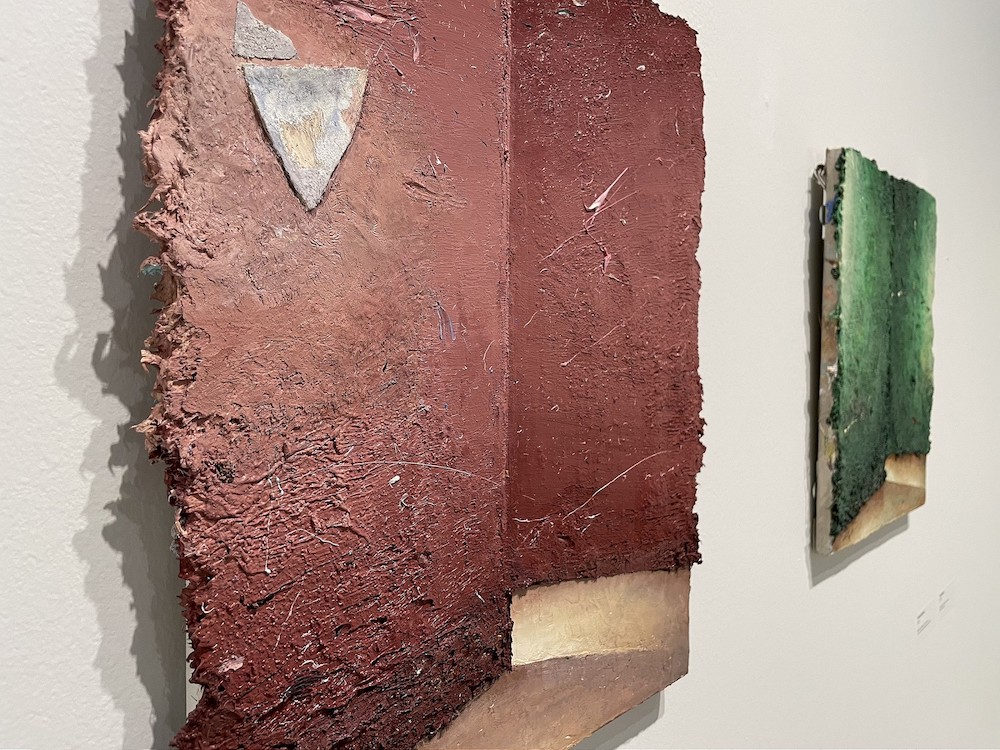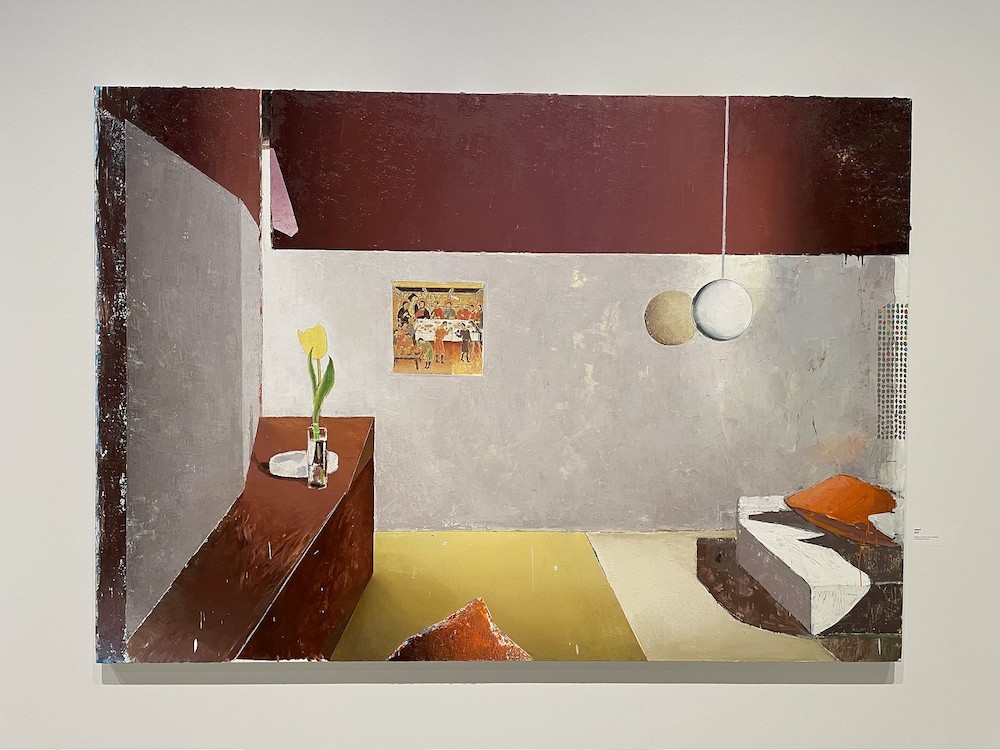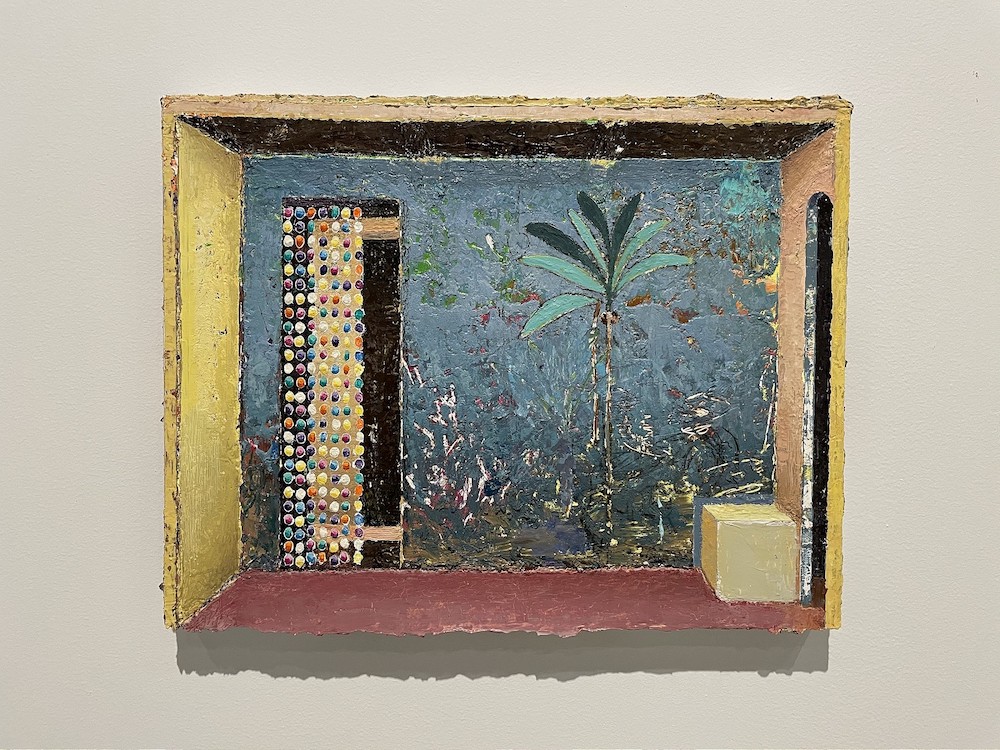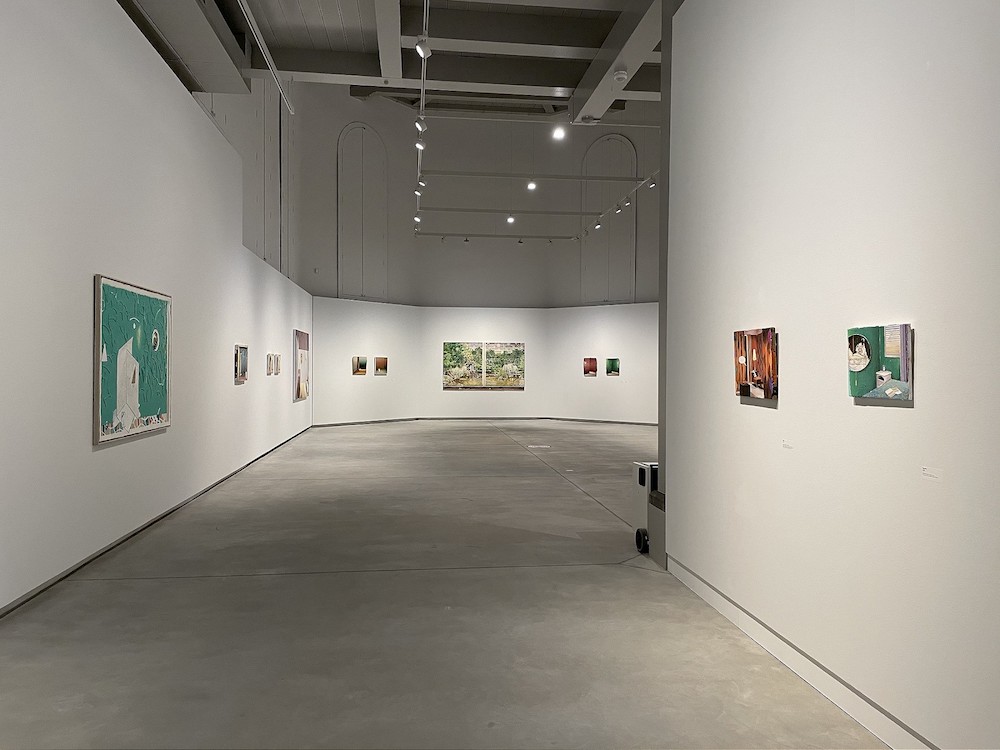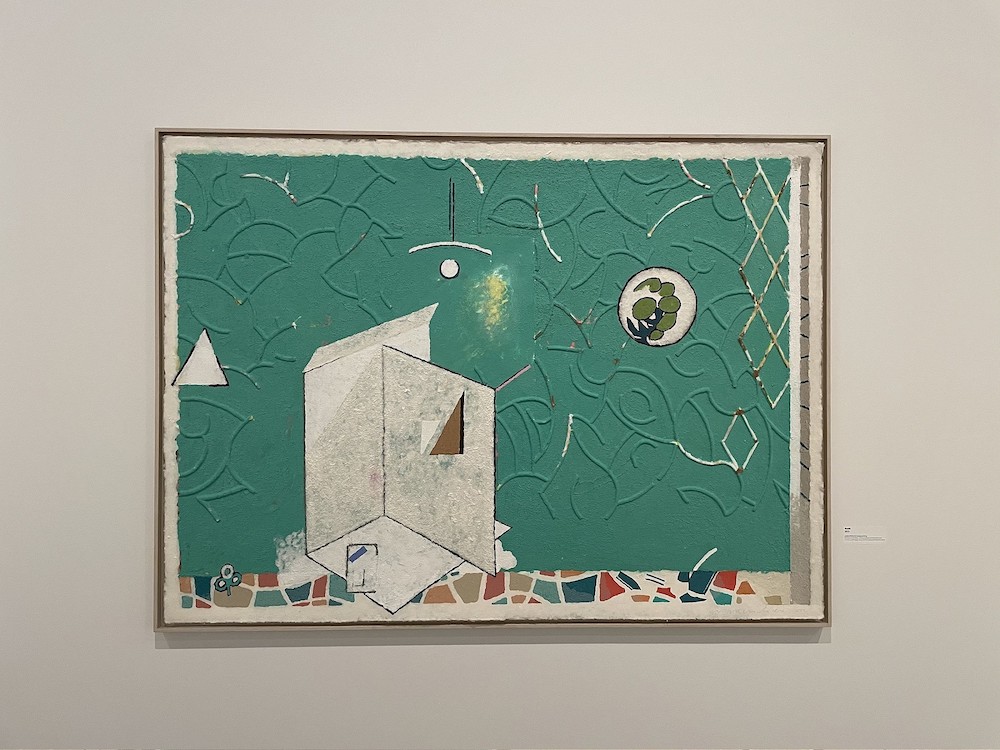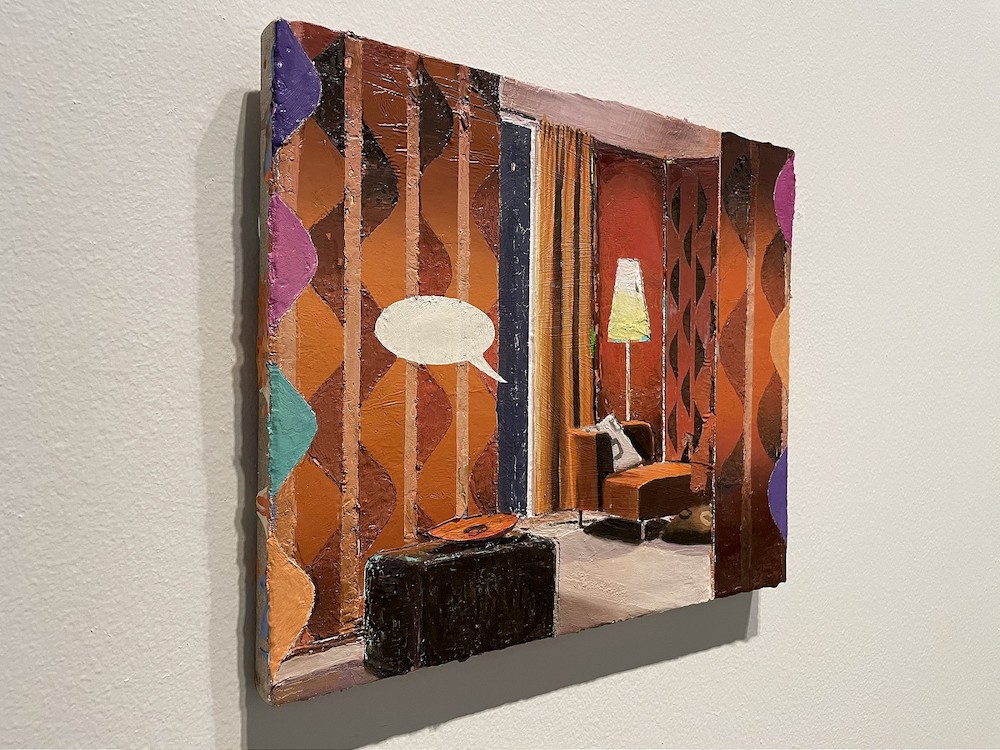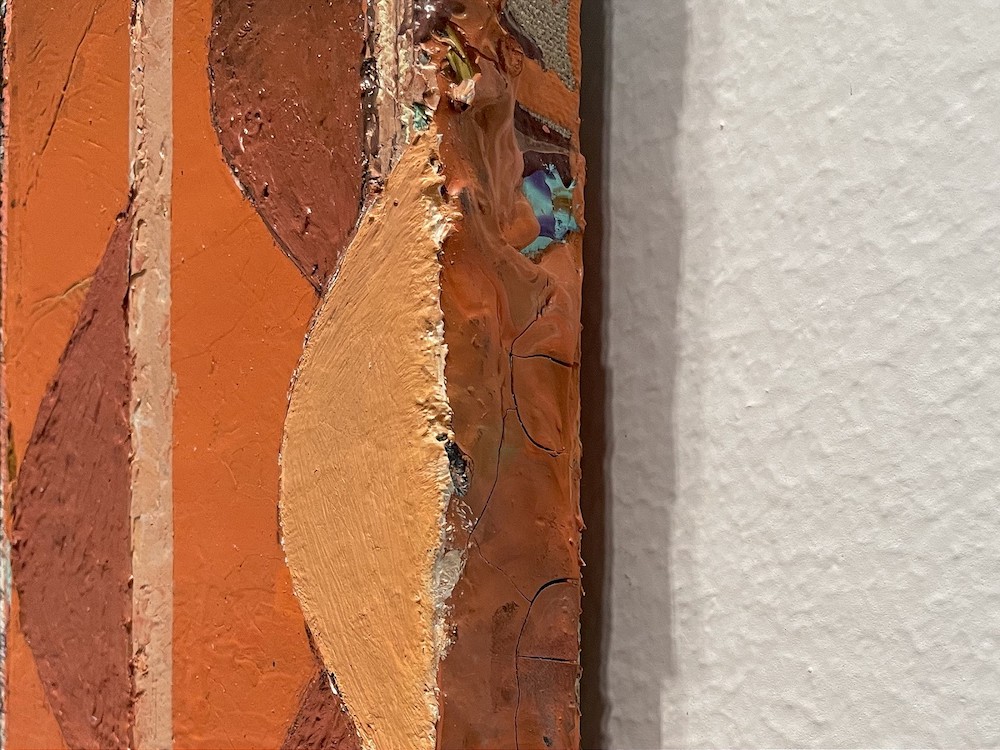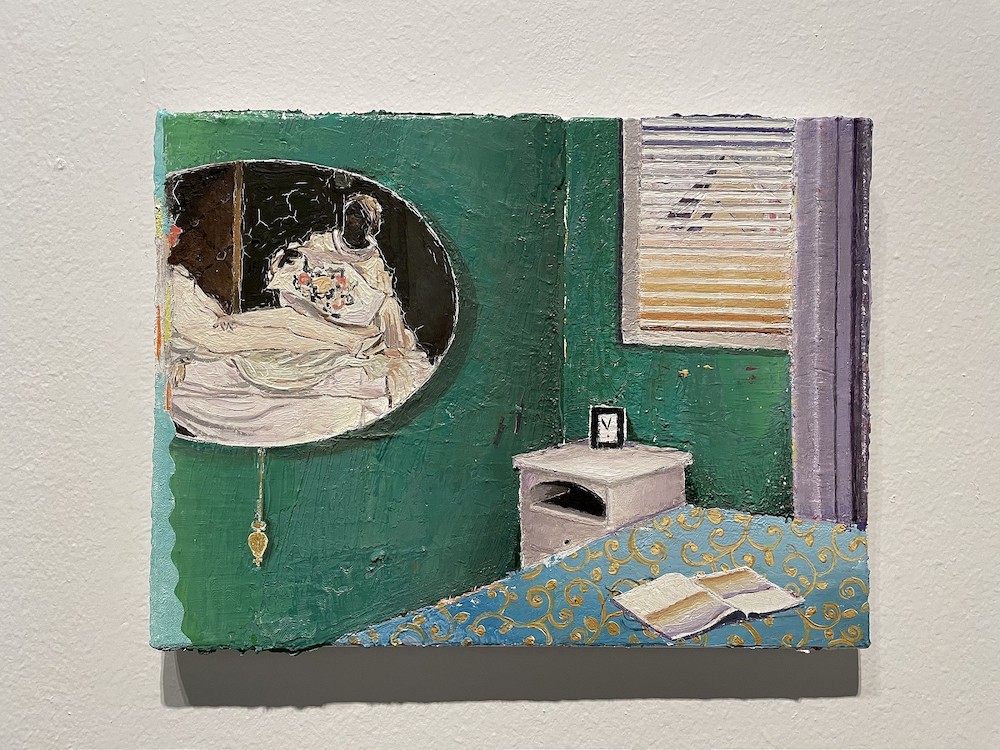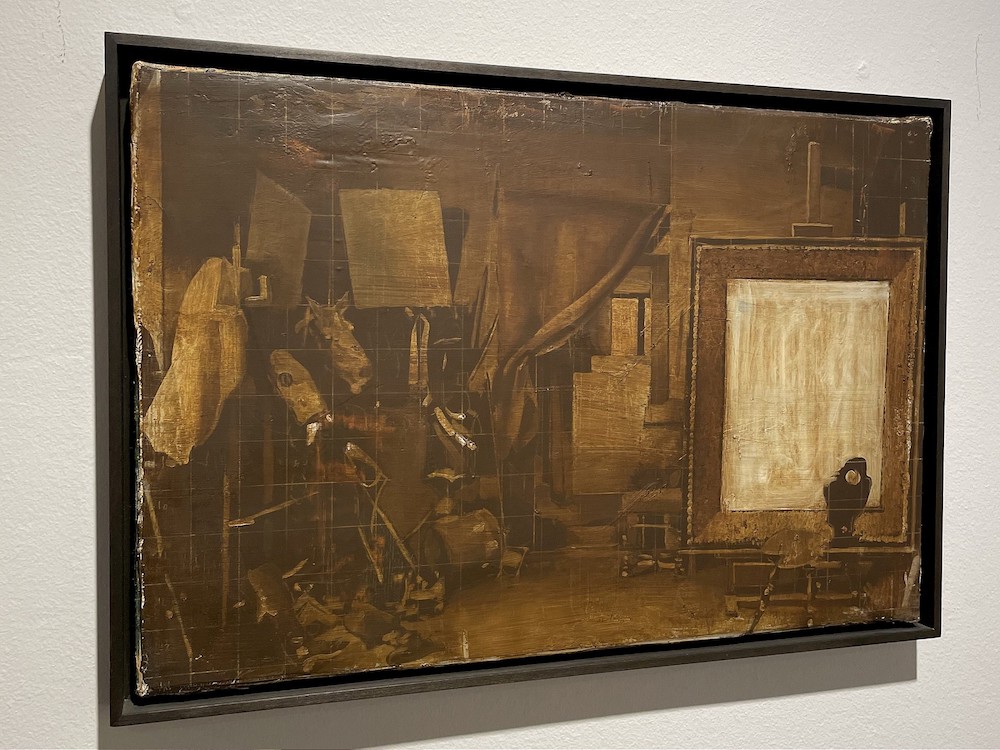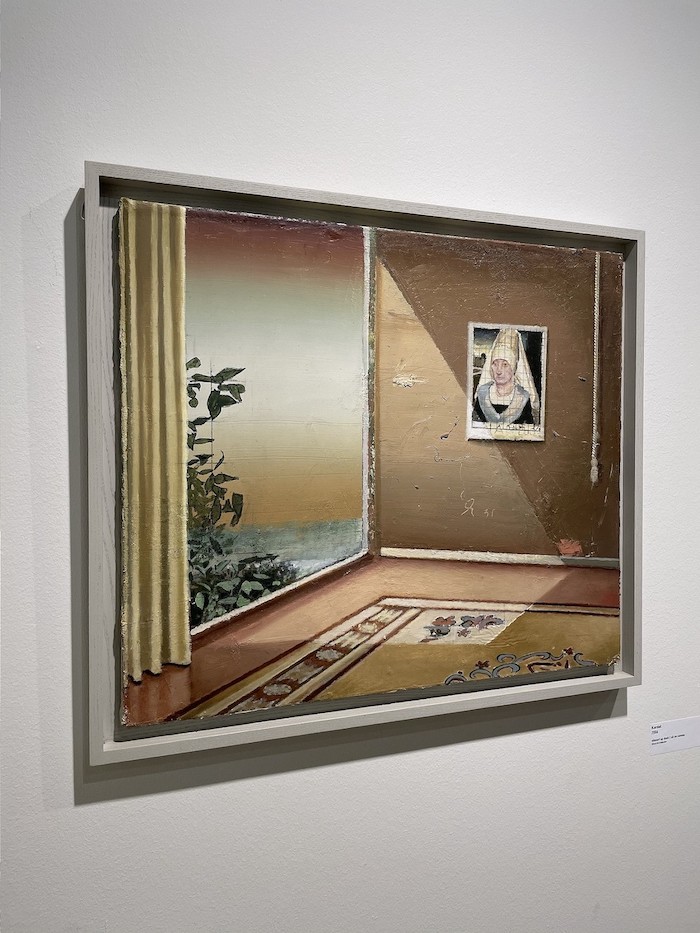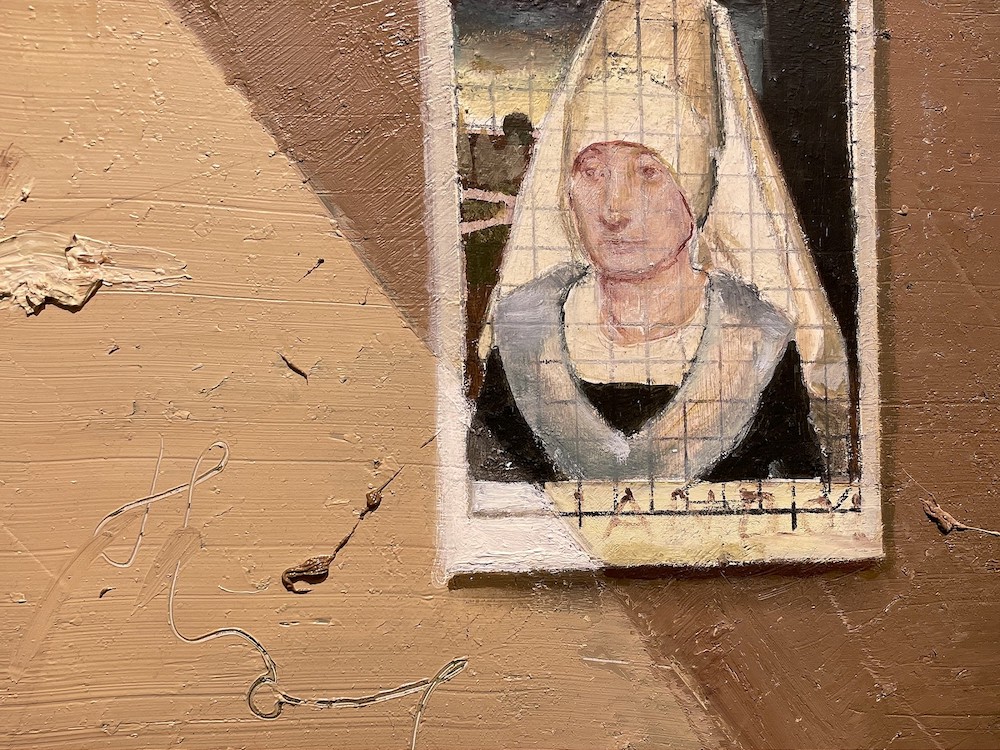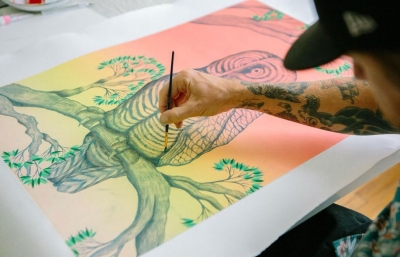Whether studio apartment or suburban chateau, sloppy or spartan, our home interiors have become personal stage sets for each of us, 24/7 theaters where life takes place. With this in mind, Matthias Weischer's solo exhibition, on view through March 28, 2021 at the Drents Museum in Assen, The Netherlands, is particularly relevant.
Following his recent NYC solo debut with Grimm gallery, Bühne (Stage) presents an overview of the artist's oeuvre in the past two decades, encompassing early renditions of domestic scenes inhabited by abstracted characters. Ruminations of outdoor gardens influenced by his stay at Villa Massimo in Rome and newer interior settings are open for inspection. Beyond a decorative overview, Weischer continues his fascination with the relationship of humans and place, as well as the connection of all the elements to space, all executed on the two-dimensional surface of the canvas. As a key representative of what is widely recognized as the New Leipzig School, the theatrical nature of the paintings dominates Weischer's practice. With an ability to see the world geometrically, his paintings project various optical views, reminiscent of interior perspectives of the Italian Renaissance.
In earlier works around 2006-2009, the artist regularly constructed spaces filled with collaged, familiar, household items arranged within a deserted interior, depicting the complicated, ambiguous relationship between objects and human activity. Seeking to abandon such psychological connotations, the painter is now more Interested in creating dimension and perspective within the space itself. In subjugating content, he reduces the complexity of image to the point of abstraction, only to surprisingly bounce back with an obvious representational element. Such fascination directly informs the "twin paintings," which were made at the same time, featuring the same details and forcing focus on the subtleties rather than the picture as a whole. The vintage furniture, everyday objects, plants, or ornaments, are regularly reduced to sole ideas of them, rather than their physical incarnation which exists with a practical purpose. Through such an approach the visuals have a stronger connection to memories of the past and without a direct reference to an existing, real place, they are becoming abstract still lives.
The images are built on drawings which are the base, as he works from pre-drawn references that enable modification of images during the painting process, something that would be different and difficult if working from a reference photograph. Essential artistic technique is apparent in his frequent use of printmaking, etching, and other methods directly connected to drawing. Starting off from a grid that creates perspective, often left visible in finished works, Weischer manipulates thick layers of paint until the background image starts to appear. Frequent use of subdued hues, rooted in a study of materiality, infuses an atmosphere of melancholy. As the blank stage is constructed through intuitive, expressive manipulation of paint, the artist reverts to representational painting as he “furnishes” the set. Empty rooms are outfitted with basics, such as doors, windows, simple furniture, or a plant. Overflowing paint, raw textures and rich surfaces, embody the qualities of space. Suspended in time, the flow of memory pulsates in each piece. —Sasha Bogojev

